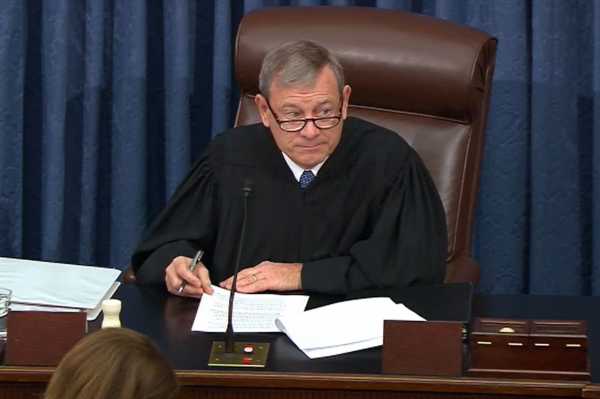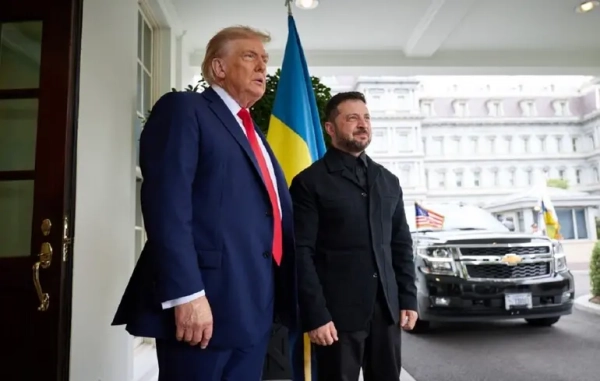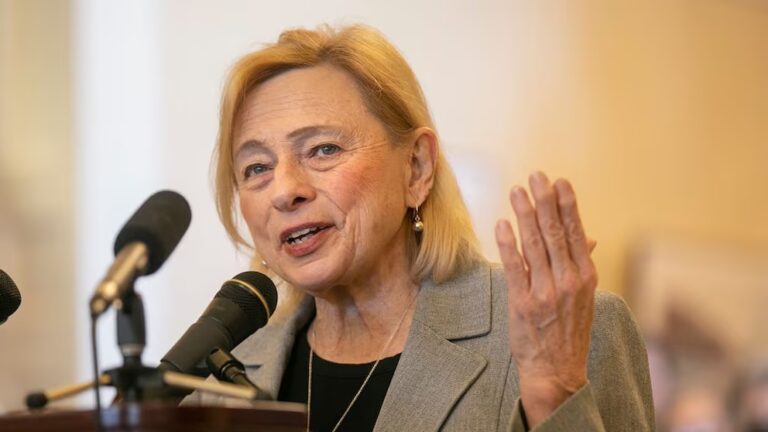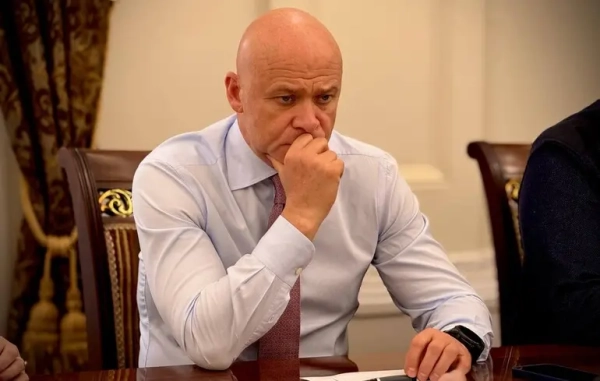
Espinoza v. Montana Department of Revenue is a case about two provisions of the First Amendment that are in tension with each other: The Free Exercise Clause limits the government’s ability to deny some benefits to people of faith. The Establishment Clause restricts the government’s ability to advance religion.
The Court, as it acknowledged in a decision written nearly a half a century ago, has “struggled to find a neutral course between the two Religion Clauses.” Both are “cast in absolute terms,” Chief Justice Warren Burger wrote in Walz v. Tax Commissioner (1970), and both of them, “if expanded to a logical extreme, would tend to clash with the other.”
This clash is front and center in Espinoza, which involves a Montana program that provides tax credits to people who donate to a scholarship program for private schools. The overwhelming majority of this money went to religious institutions.
The Montana Supreme Court struck down the entire program, holding that it violates a provision of Montana’s state constitution which prohibits the state from making “any direct or indirect appropriation or payment from any public fund or monies” to churches or other religious institutions. This state supreme court decision is now being challenged before the Supreme Court of the United States.
The purpose of the state constitutional provision was hotly contested at oral arguments on Wednesday. The state claims that it was enacted to prevent the very kind of state entanglement with religion that the federal Establishment Clause warns against. According to the state’s defense of its supreme court’s decision, a ban on government funding of religious institutions serves to prevent “the government from gaining undue influence over religious schools, preserve funding for public schools, and protect the rights of taxpayers with religious objections to state aid.”
The Court’s right flank argued that this state constitutional provision was enacted for a much more nefarious purpose — in Justice Brett Kavanaugh’s words, to advance “grotesque anti-Catholic bigotry.”
For the most part, the justices seemed to retreat into familiar ideological corners during Tuesday’s oral argument. All four Democratic appointees appeared likely to side with the state in its effort to shut down the scholarship program. Justices Samuel Alito, Neil Gorsuch, and Kavanaugh, meanwhile, all appeared to view the Montana Supreme Court’s decision as an act of discrimination against religious people. (Justice Clarence Thomas, as is his ordinary practice, did not ask any questions.)
Significantly, however, Chief Justice John Roberts appeared genuinely conflicted by this case. Though he did ask one question that appeared sympathetic to his most conservative colleagues, he also suggested at one point that the case should disappear because it wasn’t brought by the proper plaintiff. He also appeared bothered by Justice Stephen Breyer’s suggestion that a victory for the Espinoza plaintiffs could fundamentally undermine public schools.
It’s impossible to predict with certainty how Roberts will approach this case, but it seems possible that he will join his liberal colleagues to say that his Court lacks jurisdiction to hear it. If the Court does claim jurisdiction over the case, Roberts’s questions at oral argument make him appear likely to side with his fellow conservatives — but on narrow grounds.
Much of the plaintiffs’ argument rests on an anachronism
The plaintiffs’ lawyers repeatedly referred to the Montana constitutional provision at issue in this case as a “Blaine Amendment.” According to the Institute for Justice, the libertarian law firm behind this case, Blaine Amendments are “controversial state constitutional provisions rooted in 19th century anti-Catholic bigotry. Their purpose was to prevent the government from funding Catholic schools.”
Thus Kavanaugh made the claim that the Montana Constitution is rooted in “grotesque anti-Catholic bigotry.”
But this claim is anachronistic. There was, indeed, a movement in the 19th century to restrict funding for Catholic schools, but the state constitutional provision at issue in this case was enacted in 1972.
Kavanaugh’s argument is also hard to square with the Supreme Court’s decision in Abbott v. Perez (2018).
Perez involved an unusual set of circumstances where the state of Texas enacted a legislative map that, according to a federal court, was an illegal racial gerrymander. Two years later, the state enacted a new map that kept many of the gerrymandered districts in place.
Nevertheless, the Supreme Court upheld this new map. “The only direct evidence brought to our attention suggests that the 2013 Legislature’s intent was legitimate,” Justice Alito said in his majority opinion. “It wanted to bring the litigation about the State’s districting plans to an end as expeditiously as possible.” So even if state lawmakers acted with illegal animus when they enacted a particular law, courts should not strike down a later, similar law if the new law wasn’t enacted with impermissible motives.
In other words, even if Montana previously enacted a “Blaine Amendment” for anti-Catholic reasons in the 19th century, as the plaintiffs’ claim, Perez suggests that this prior motive is irrelevant. All that matters under Perez is whether the individuals behind the 1972 constitutional provision were motivated by anti-Catholic bigotry.
The liberal justices want this case to go away
There are two fairly strong arguments that the Supreme Court lacks jurisdiction to hear this case, and many of the liberal justices spent a great deal of time pressing them.
As a general rule, federal courts may not hear a case unless the plaintiff has been injured in some way by the law that they are challenging, and unless there remains an active dispute between the plaintiff and the defendant.
The plaintiffs in this case are parents who wish to send their children to a private, Christian school. They claim that their children would receive a scholarship through the state-subsidized program if that program were still in effect, but they can’t because the Montana supreme court struck down the program.
Significantly, however, the state supreme court did not hold that the state may offer scholarships at secular private schools but not religious schools. On the contrary, the Montana court held that the program must be struck down in its entirety — meaning that secular schools also will not receive funding.
As a general rule, the Free Exercise Clause prohibits discrimination on the basis of religion, but, as Justice Elena Kagan emphasized, “there is no discrimination” now that the entire program was struck down. All private schools, whether secular or religious, are now ineligible for scholarships.
There are two remedies for discrimination. In Justice Ruth Bader Ginsburg’s words, a state may “level up” and apply a previously discriminatory program to everyone. Or it may “level down” and apply it to no one. In either event, the state is no longer treating people of faith differently than other people.
So it’s arguable that this case is moot because there’s no longer an active dispute between the plaintiffs and the state: Any discrimination no longer exists.
Justice Sonia Sotomayor raised another jurisdictional problem: A plaintiff must show that they were injured in some way to challenge a law in federal court. But in this case, the scholarships are paid directly to the schools themselves and not to individual students. Thus, she argued, it’s far from clear that the injured party brought this lawsuit.
Under Sotomayor’s approach, this case could wind up before the justices again, but only after a school files a lawsuit.
Significantly, Roberts asked one question that appeared sympathetic to Sotomayor’s view — he said that “the injury flows through the school.” As Roberts noted, “the money would go to the schools, not to the parents. And we don’t have a school in this case.”
That may be a sign that he’s inclined to make this case go away, for now.
The Court appears unlikely to accept the plaintiffs’ most radical argument
In their brief, the Espinoza plaintiffs took a deeply radical position.
The problem with a legal rule that allows the government to subsidize secular private schools but not religious ones, they claimed, is “this means that the student may be forced to choose between attending a school that accords with her beliefs or receiving thousands of dollars in government benefits.” States, they claim, “cannot condition an individual’s receipt of public benefits on her ceasing religiously motivated conduct.”
Taken to its logical extreme, this argument would undermine public education. A student faced with a choice between attending a public school or paying tuition at a religious private school may also have to “choose between attending a school that accords with her beliefs or receiving thousands of dollars in government benefits.” According to the US Census Bureau, states spend an average of $11,392 per year on each public school student.
The radicalism of this argument did not escape Breyer, who spent much of the argument warning that a ruling for the plaintiffs could lead to mandatory state funding of religious schools. Significantly, Roberts also expressed similar concerns, at one point asking the lawyer for Montana to speak to Breyer’s worries.
At another point in the argument, Sotomayor asked plaintiffs’ attorney Richard Komer whether “states are forced to give money both to secular and religious schools.” In response, Komer seemed to abandon the radical argument advanced by his brief, telling Sotomayor that “no” states are not forced to fund private education.
The outcome in Espinoza is uncertain, but there is a decent chance that this case will be dismissed on jurisdictional grounds, with Roberts crossing over to join the liberals.
Should the Court hold on to the case, the plaintiffs appear likely to win. But that victory is likely to be small. Roberts appeared to agree with Breyer that a decision mandating public funding of private schools would be untenable.
The plaintiffs, in other words, may win a decision saying that if a state decides to subsidize private schools, it must include religious schools in that program. That’s a victory for the religious right, but a much smaller one than the Espinoza plaintiffs appeared to seek in their brief.
Sourse: vox.com






